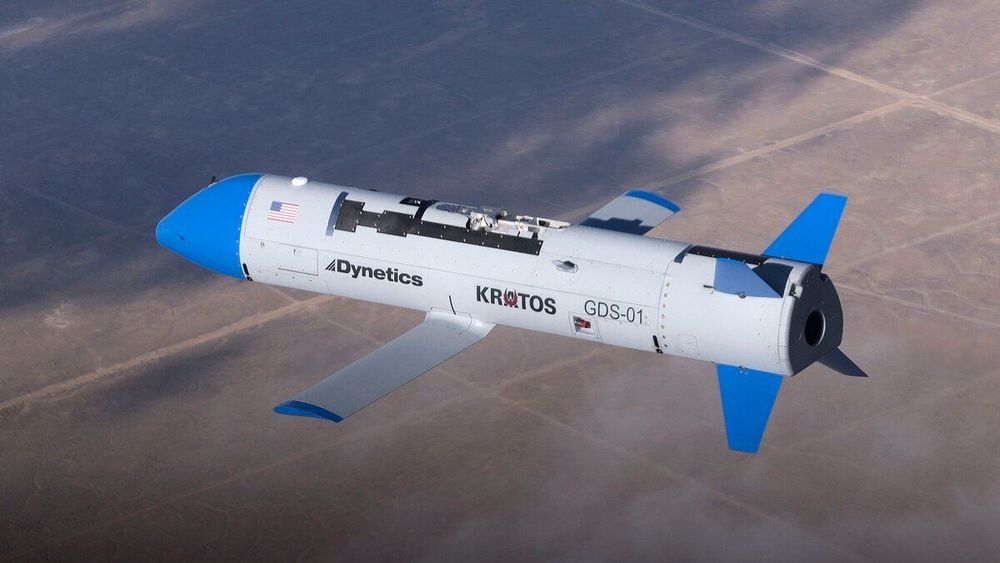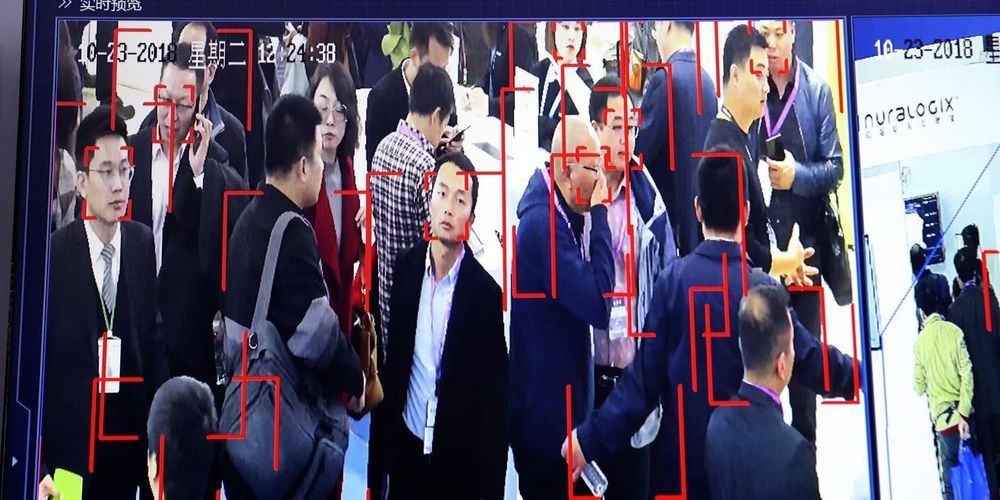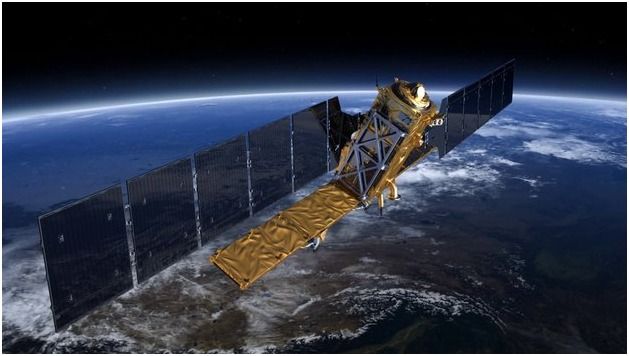Drone maker Skyfront has partnered with Silvus Technologies to create a drone with a maximum flight time of five hours and an operating distance of 100km. The new long-range drone will allow operators to inspect pipelines and other assets as well as conduct long-range surveillance missions.
Category: surveillance – Page 28

DARPA is testing drones it can launch from a plane—then collect mid-air
The news: The Defense Advanced Research Projects Agency (DARPA) has conducted the first test of a new type of drone that can be launched from a plane in a swarm and recovered in mid-air when it’s done its job.
How it works: A military transport or bomber plane releases a series of drones in rapid succession. They carry out the task designated to them (surveillance, for example) and then return to the plane, docking on a line before being winched in. It looks a bit like the airborne refueling process.
Testing: A test, which took place in Utah in November but was first reported this week, showed that a military transport plane can successfully launch and monitor the drone, known as an X-61A Gremlin. However, after a successful mid-air launch and a flight lasting one hour, 41 minutes, the drone crashed when “mechanical issues” prevented its parachute from deploying, the firm behind the drone, Dynetics, said in a press statement. There’s video of the test here (it includes bad music, be warned). This spring, DARPA will try to fly and recover four of the drones for the first time.

Surveillance of Bat Coronaviruses in Kenya Identifies Relatives of Human Coronaviruses NL63 and 229E and Their Recombination History
Circa 2017 Bats harbor a large diversity of coronaviruses (CoVs), several of which are related to zoonotic pathogens that cause severe disease in humans. Our screening of bat samples collected in Kenya from 2007 to 2010 not only detected RNA from several novel CoVs but, more significantly, identified sequences that were closely related to human CoVs NL63 and 229E, suggesting that these two human viruses originate from bats. We also demonstrated that human CoV NL63 is a recombinant between NL63-like viruses circulating in Triaenops bats and 229E-like viruses circulating in Hipposideros bats, with the breakpoint located near 5′ and 3′ ends of the spike (S) protein gene. In addition, two further interspecies recombination events involving the S gene were identified, suggesting that this region may represent a recombination “hot spot” in CoV genomes. Finally, using a combination of phylogenetic and distance-based approaches, we showed that the genetic diversity of bat CoVs is primarily structured by host species and subsequently by geographic distances.
bMarie Bashir Institute for Infectious Diseases and Biosecurity, Charles Perkins Centre, School of Life and Environmental Sciences and Sydney Medical School, The University of Sydney, Sydney, Australia.
Find articles by Mang Shi
aDivision of Viral Diseases, Centers for Disease Control and Prevention, Atlanta, Georgia, USA.

Why Gene Editors Like CRISPR/Cas May Be a Game-Changer for Neuroweapons
This year marks the Eighth Review Conference (RevCon) of the Biological Toxins and Weapons Convention (BWC). At the same time, ongoing international efforts to further and more deeply investigate the brain’s complex neuronal circuitry are creating unprecedented capabilities to both understand and control neurological processes of thought, emotion, and behavior. These advances have tremendous promise for human health, but the potential for their misuse has also been noted, with most discussions centering on research and development of agents that are addressed by existing BWC and Chemical Weapons Convention (CWC) proscriptions. In this article, we discuss the dual-use possibilities fostered by employing emergent biotechnologic techniques and tools—specifically, novel gene editors like clustered regular interspaced short palindromic repeats (CRISPR)—to produce neuroweapons. Based on our analyses, we posit the strong likelihood that development of genetically modified or created neurotropic substances will advance apace with other gene-based therapeutics, and we assert that this represents a novel—and realizable—path to creating potential neuroweapons. In light of this, we propose that it will be important to re-address current categorizations of weaponizable tools and substances, so as to better inform and generate tractable policy to enable improved surveillance and governance of novel neuroweapons.
Keywords: : CRISPR, Gene editing, Neuroweapon, Neurotherapeutic pathways, Dual-use neuroscience, Biosecurity policy.
T his year marks the Eighth Review Conference (RevCon) of the Biological Toxins and Weapons Convention (BWC), the purpose of which is to ensure that the convened parties’ directives continue to be relevant to and viable for prohibiting the development, production, and stockpiling of biological weapons in the face of newly emerging scientific advancements and biotechnologies. Apropos of issues raised at previous RevCons and elsewhere, there are growing concerns about current and future weaponization of neurobiological agents and tools (ie, “neuroweapons”1–6).

Thousands of Chinese Students’ Data Exposed on Internet
A Chinese facial-recognition database with information on thousands of children was stored without protection on the internet, a researcher discovered, raising questions about school surveillance and cybersecurity in China.
The cache was connected to a surveillance system labeled “Safe School Shield” and contained facial-identification and location data, according to Victor Gevers, a researcher at the Dutch nonprofit GDI Foundation, which scans the internet for vulnerabilities and flags them to owners for fixing.

Special sunglasses, license-plate dresses: How to be anonymous in the age of surveillance
Cory Doctorow’s sunglasses are seemingly ordinary. But they are far from it when seen on security footage, where his face is transformed into a glowing white orb.
At his local credit union, bemused tellers spot the curious sight on nearby monitors and sometimes ask, “What’s going on with your head?” said Doctorow, chuckling.
The frames of his sunglasses, from Chicago-based eyewear line Reflectacles, are made of a material that reflects the infrared light found in surveillance cameras and represents a fringe movement of privacy advocates experimenting with clothes, ornate makeup and accessories as a defense against some surveillance technologies.

FCC Filing Confirms Final Contestant in DARPA’s $12 Million Satellite Launch Challenge
In 2018, the U.S. Defense Advanced Research Projects Agency (DARPA) announced the multi-million-dollar DARPA Launch Challenge to promote rapid access to space within days rather than years. To earn prizes totaling more than US $12 million, rocket companies would have to launch unfamiliar satellites from two sites in quick succession.
“The launch environment of tomorrow will more closely resemble that of airline operations—with frequent launches from a myriad of locations worldwide,” said Todd Master, DARPA’s program manager for the competition at the time. The U.S. military relies on space-based systems for much of its navigation and surveillance needs, and wants a way to quickly replace damaged or destroyed satellites in the future. At the moment, it takes at least three years to build, test, and launch spacecraft.
To ensure that DARPA was incentivizing the flexible, responsive launch technologies the U.S. military needs, competitors would receive information about the site of their next launch fewer than 30 days prior to each flight, DARPA’s rules stated, and only learn their actual payloads two weeks out.

Satellite AI: Seeking solutions in high resolution
Satellites have been flying around the earth for decades — scanning landscapes and capturing images of our fast-changing planet. Remote sensing has been around since even before the first flight of the Wright brothers. It was restricted to hot air balloon flights back then. Systematic aerial photography and satellite remote sensing reached an inflection point during the Cold War, when the need for surveillance led to modification of combat aircraft for the purpose of spying. The space race also gave a fillip to satellite launches. The first satellite photographs of the earth were taken on August 14, 1959 and satellite image processing techniques evolved in 1960s and 1970s.
Till late 1990s, the primary consumer of remote sensing data was either governments bodies or defence agencies. This was because of the strategically sensitive nature of technology, which gave birth to the fear that it can be used for spying. However, after the fall of the Soviet Union commercial satellite imagery market began to evolve and IKONOS became the first commercial, very-high resolution satellite to be launched in 1999. Another factor in play was the growing use of computer software for analysis of data and satellite data consumption benefited from this growth in the 1990s.
The 21st century saw rapid changes in the remote sensing industry. Data consumption continued to increase. This was accelerated by the fall in costs of satellite imagery. Moreover, open data sources emerged with Landsat data becoming publicly available in 2009. Copernicus Hub followed in 2014 when the European Space Agency launched Sentinel 1. Another inflection point occurred in the industry when Planet launched a constellation of 88 Dove satellites abroad the PSLV-C37 of ISRO. These are shoe-box sized satellites leveraging the power of off-the-shelf consumer electronics to reduce costs. Further innovation in satellite launching by a slew of startups led by SpaceX has reduced costs of launching satellites.

How we survive the surveillance apocalypse
But no, privacy isn’t dead. A path to reclaiming it — fuzzy and almost too late — is starting to emerge. We just have to be angry enough to demand it.
Trying to get straight answers has been, literally, a full-time job. I’ve digested the legal word salad of privacy policies, interrogated a hundred companies and even hacked into a car dashboard to grab my data back. There are lots of stories about online threats, but it feels different watching your personal information streaming out of devices you take for granted. This year I learned there is no such thing as “incognito.” Just stepping out for an errand, I discovered, lets my car record where I shop, what I listen to and even how much I weigh.

5G, AI, data privacy and mass surveillance — 12 biggest tech policy challenges India will have to face in 2020
As access to the internet grows, so do the risks associated with being online. Cybersecurity threats are on the rise as data hackers find new ways to breach through firewalls. Earlier this year bad actors were able to gain access to the administrative serves of India’s largest nuclear power plant with a simple phishing email.
The government want to increase its cyber might to ward off such hazards but experts feel some of its policies might do the exact opposite.
2020 will be a busy year for India with the 5G spectrum auction still pending, Personal Data Protection Bill under discussion, and the deadline for social.